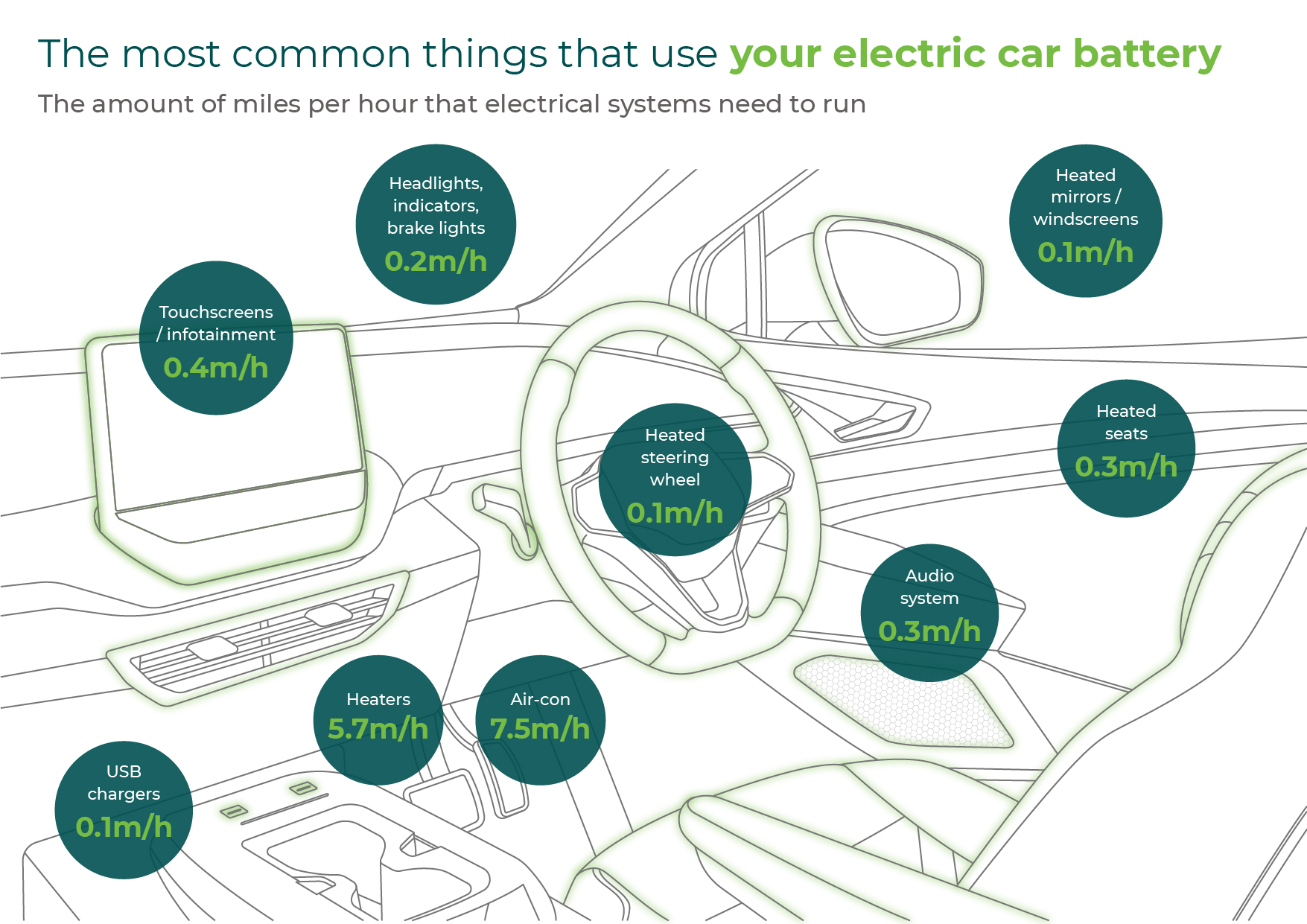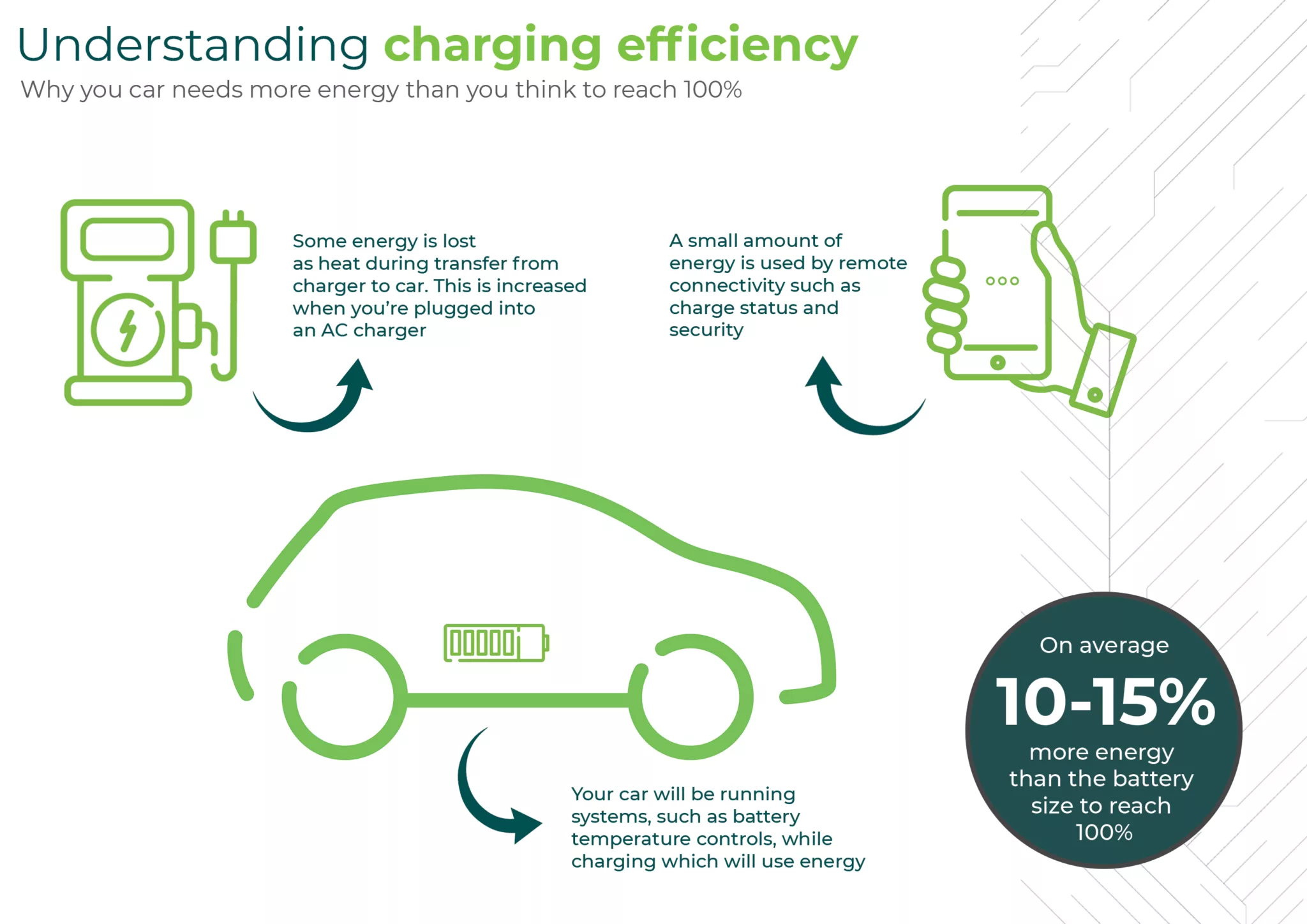Part of getting to grips with driving an EV involves understanding how the battery works, how to care for it and how charging differs from filling up a petrol tank.
This includes learning about energy loss during charging and the benefits of pre-conditioning your battery to maximise efficiency.
Don’t worry, this isn’t as complicated as it sounds and in the sections below, we’ll cover these key points so you’re ready to go.
Pre-conditioning your electric vehicle’s battery can improve charging and vehicle performance, especially in colder seasons.
It’s aimed at warming up the battery to an ideal temperature before you plug in, which not only facilitates faster charging times but also plays a significant role in maintaining battery health.
Pre-conditioning extends beyond battery care, as it’ll also make your time behind the wheel more comfortable.
Using pre-conditioning (often via your vehicle’s app) allows you to set the in-car temperature to a comfortable level before setting off on a journey (whether that’s cooling it down in the summer or heating it up on chilly mornings).
When you drive an EV, your battery does more than just power the miles you travel, it also keeps various car functions running smoothly.
For instance, on a sweltering day, the air conditioning works extra hard to keep you cool, while in freezing weather, the heaters are cranked up to keep you warm.
After powering your car’s movement, the climate control system is the biggest drain on your battery. Of course, other features like touchscreens, audio systems, and headlights also draw power from the battery but in reality, these are minimal.
The infographic below shows how many miles per hour these features consume.

your EV is a bit different from filling up a petrol tank because some energy is always lost during the process. This phenomenon, known as transmission loss, is common in all electrical processes, where some energy is lost as heat during transfer.
It’s especially noticeable with AC chargers since your car needs to convert AC to DC power. Longer charging cables can also reduce efficiency, leading to about 10-15% energy loss.
Even while charging, your car uses some battery power, similar to using your phone while it’s plugged in. You can help improve efficiency by preconditioning your battery before charging to get it to the ideal temperature. At GRIDSERVE, we minimise energy loss with thick, liquid-cooled cables designed for High Power charging.
No matter which charger you use, you only ever pay for the energy supplied to your EV. However, because of the charging efficiency mentioned above, you may find that around 10-15% less energy is added to your battery than what’s shown on your receipt.
If you are ever at all concerned that the percentage is outside this expected range, please contact customer service.
The infographic below explains how charger efficiency works in a little more detail.

Top tip: Charging curve explained
Charging an electric car is not like flicking on a light switch. That’s to say, you don’t plug in and immediately get a static amount of power flowing into your car’s battery.
Instead, because of complex battery chemistry, there’s something known as a charging curve. It means when you first plug in, the battery will initially pull charge at a slower rate before increasing to hit its maximum charging power. It’ll then stay close to this for most of the charge, but as you approach completion (normally above 80%), the power will taper off to protect the battery from over-filling.
The maximum charging speed you’ll achieve during the peak phase will also depend on a number of factors, including the charger you’re using, the vehicle specification, state of charge, grid connection, weather conditions and battery temperature.
Get in touch with GRIDSERVE

Tell us what you think
Help us deliver the best charging experience by joining our EV community.

Our 24/7 helpline:
Call us on 0800 240 4242 for real-time help at one of our charging locations.

Follow us on Twitter
Get the latest news and updates on the GRIDSERVE Electric Highway.
Real-time troubleshooting
Call our expert team for 24-hour support at a charging location across the GRIDSERVE Electric Highway.
Contact us
Do you still have questions?
Send a message to our customer support team and we’ll get back to you as soon as possible.
Contact us